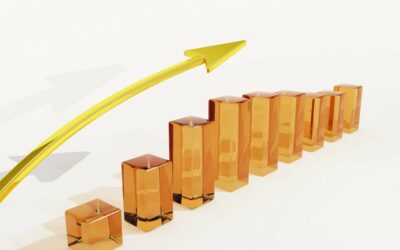Wealth DFM talks to Howie Li, Head of ETFs at Legal & General Investment Management (LGIM) to discover his view about some of the most commonly heard myths about fixed income ETFs.
WDFM: Are Fixed Income ETFs dangerous? Don’t they pose liquidity problems and can they really be trusted in crises?
HL: No, I don’t see fixed income ETFs as dangerous.
What we should do is take one step back and remember that Exchange Traded Funds (ETFs) are a form of mutual fund. It is basically a mutual fund that happens to be listed and that is able to provide a pricing throughout the entire day. So, a fund manager managing a portfolio of bonds in the traditional mutual fund, an unlisted one, is doing the exact same thing as in the ETF structure.
What really matters is how the portfolio itself is constructed. The so-called ‘danger’ that everyone talks about in the market revolves around liquidity.
To answer that question, if we rewind to 2020 and look at how some of the bond markets behaved back in March and April, everyone faced the same kind of liquidity issues or concerns as every single bond manager did. All the ETFs continued to trade during that period and all ETFs continued to have prices.
There have been papers released since to highlight the important role of ETFs, which is the ability to give real time, transparent pricing on the value of transacting in those bonds.
I think that’s been a very good experience. If we look back at last year we can show that ETFs did exactly what they were supposed to do, give investors diversified access to a portfolio of bonds and the prices were very clear and transparent throughout the day. Investors could buy throughout the day on a daily basis. So a huge amount of flexibility was afforded to fixed income ETFs on top of what investors normally experienced in other mutual funds.
WDFM: So when people worry about whether they can be trusted in a crisis, then you feel fairly confident that they can?
HL: Yes I do. I used that example from last year because I think many people would call the Covid-19 pandemic and lockdown a crisis.
And there were a lot of bonds selling off and the bond spreads were actually increasing. So whether you’re a fund manager of an ETF or you’re a bond manager buying individual bonds, buying or selling, you face these spreads.
I think what’s been really encouraging is that the ETF essentially highlighted this knowledge and this insight for everyone to see, hat was happening in the bond market, the spreads were widening and actually the ETF prices were just reflecting that.
WDFM: Aren’t Fixed Income ETFs commoditised products? How can you add value except through lower fees?
HL: It depends on how you look at it. The fixed income market, when it comes to ETFs, is definitely less developed than in equities. Some would say, well, some equity ETFs are commoditised. But I would only say that that’s the case when you look at traditional benchmarks on the equity side, it tends to be so-called market cap benchmarks where there are perhaps in the UK market a number of FTSE 100 trackers. Now, in the last five or so years, there has been much more developments in how portfolios are put together in ETFs. Both smart beta and an increase in the active focus of ETFs have been on the rise.
And we at LGIM certainly take a very active view in terms of designing investment strategies which are very much focused on how investors think now and into the future.
So when we look at the bond lens itself, you might ask, are they commoditised? There are probably some products that multiple managers or multiple ETF issuers are issuing and tracking the same thing. So to that extent, perhaps you can call that commoditised because investors have choice and it is therefore down to pricing.
The bond market is being shaped very differently. The concerns of investors which are being highlighted are around things like liquidity. Also around being able to buy and sell and there’s a lot of value that’s sometimes lost if you’re buying and selling all at the same time in a crowded market.
We’re taking a strategic approach and recognising those risks and designing strategies that specifically avoid
the crowds, taking into account an enhanced level of liquidity. We’re making sure the portfolio itself has overall increase in its liquidity profile.
Also, importantly, more and more investors are actually looking at sustainable investing and ESG as an important part that’s reshaping how they build their portfolio. That’s the active design view that we’ve taken in order to build a strategy in the way that we have because there aren’t any products that are similar in the market which do exactly the same thing. I would say some ETFs are not commoditised, whereas where there’s lots of choice tracking exactly the same thing, these are perhaps commoditised. But I think we’re still at an early stage of fixed income ETFs and there’s a lot more to consider compared to equities.
WDFM: So it’s all about adding value, it is not just about lower fees. You’re saying that there are other dimensions that LGIM can bring to the process to support the way that you manage the ETFs?
HL: Yes, absolutely. And that’s a big question for investors – is it all about fees? By chasing the lowest cost product, does that mean that they’re missing out value somewhere else?
We’re confident that our fixed income range of products are competitively priced, very close to some of the pricing that we see in the market, in the so-called ‘commoditised’ fixed income type ETFs.
However, we think that now is the time really to think about where the future allocation of capital is going. And as I mentioned, we touched on making sure that portfolios are aligned to certain ESG considerations.
We also think this is time to ensure that your holdings have a higher liquidity threshold so that you know that the portfolio is holding more liquid bonds.
The most important thing to consider is value. At LGIM, we have the benefit and experience of tracking indices for a long time, we know that value can sometimes be lost when everyone tries to buy and sell at the same time. That experience allows us to say, hold on to bonds a little bit longer than the rest of the market would and capture any reversion in prices. By designing a product in this way, we can incorporate any potential of that increasing in value in the long term, and this is something that we’ve proven across all of our index investments.
So, it’s an opportunity to think about how we invest today, but actually recognise that there are ways to do it still in
a low cost manner, recognising how we can manage the risks from ESG and liquidity, while also adding value based on our experience at LGIM.
Continue reading article…





